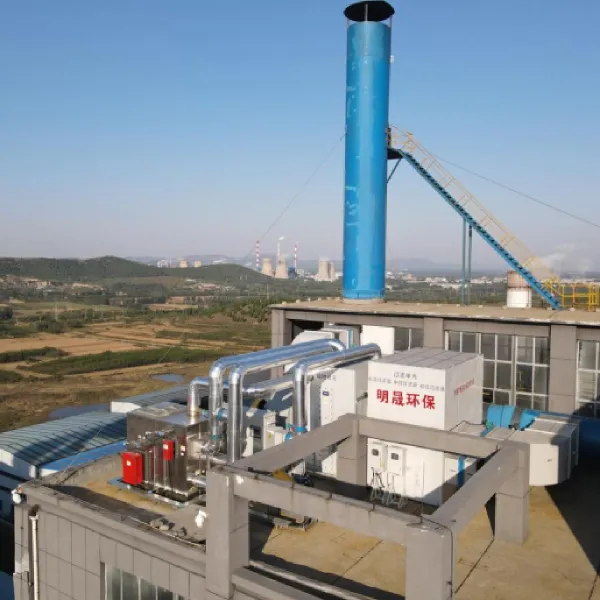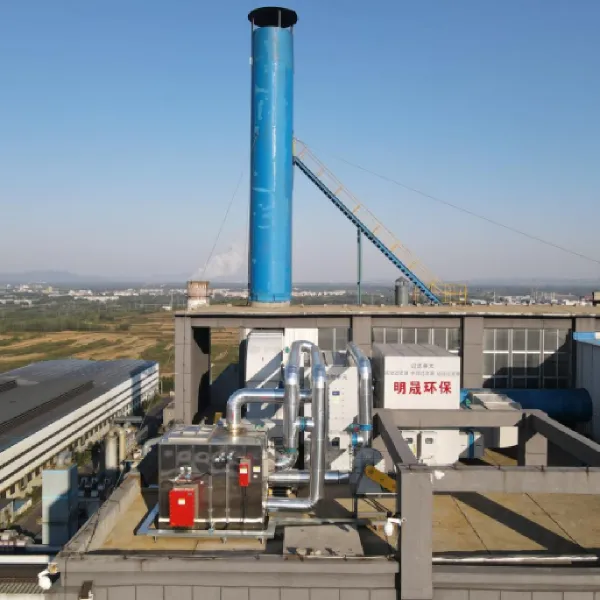Choosing Effective Desulfurization Strategies for Cleaner Industry
In today's industrial landscape, controlling emissions has become a crucial component of operational responsibility and regulatory compliance. Among the various technologies available, flue gas desulfurization (FGD) stands out as an effective solution for reducing sulfur dioxide (SO₂) emissions. These emissions, often generated by coal-fired power plants, cement factories, and metal processing facilities, contribute significantly to acid rain and air pollution. The development of both wet and dry flue gas desulfurization technologies has provided industries with flexible and efficient options to meet environmental standards.
Overview of Flue Gas Desulfurization Technologies
Basic Principles of SO₂ Removal
Flue gas desulfurization involves a chemical process that removes SO₂ from exhaust flue gases before they are released into the atmosphere. The fundamental mechanism relies on the reaction between sulfur dioxide and an alkaline sorbent, typically limestone or lime. The process neutralizes the harmful gas and converts it into harmless byproducts such as gypsum or sulfates.
Both wet and dry systems employ this core principle but differ significantly in design, reagent use, byproduct handling, and operational requirements. Understanding these differences is essential for selecting the most suitable FGD technology for a particular industrial setup.
Environmental Motivation Behind FGD Use
Industrial operations that generate high volumes of sulfur-rich emissions need reliable flue gas desulfurization systems to ensure compliance with national and international regulations. These systems are instrumental in helping companies reduce their environmental footprint, minimize public health risks, and contribute to broader sustainability goals.
As environmental regulations continue to tighten, the role of FGD in air quality management becomes increasingly critical. Both wet and dry technologies offer distinct benefits that align with evolving compliance needs and ecological expectations.
Advantages of Wet Flue Gas Desulfurization Systems
High Removal Efficiency
One of the primary advantages of wet flue gas desulfurization is its exceptional removal efficiency. These systems can remove up to 99% of sulfur dioxide from flue gas streams, making them ideal for applications with high sulfur content.
Wet FGD systems typically use a scrubbing slurry composed of limestone and water, which reacts with SO₂ to form gypsum. The byproduct can often be reused in construction, further enhancing the environmental value of the system.
Established Technology and Scalability
Wet flue gas desulfurization is a well-established technology with decades of proven application in power generation and heavy industry. Its scalability allows for integration into large industrial plants without compromising performance.
Because of their long-standing use, wet FGD systems benefit from a wealth of operational data, engineering support, and supplier availability, making implementation and maintenance more straightforward compared to emerging technologies.
Advantages of Dry Flue Gas Desulfurization Systems
Lower Water Consumption
Dry flue gas desulfurization is especially beneficial in regions with limited water resources. Unlike wet systems that rely on liquid slurry, dry FGD systems use a powdered or semi-dry reagent to capture sulfur dioxide.
This approach reduces overall water use and minimizes the risk of wastewater production and treatment costs. For industries prioritizing water conservation, dry systems provide an effective and environmentally conscious alternative.
Simplified Infrastructure and Operation
Dry FGD systems typically involve less complex infrastructure than their wet counterparts. They can be implemented with smaller equipment footprints and often require lower capital investment.
The simplicity of dry FGD operation translates into easier system maintenance, reduced operational downtime, and lower long-term costs. These systems are particularly attractive for mid-sized or older facilities undergoing retrofitting.

Comparing Long-Term Operational Benefits
Maintenance and Downtime Considerations
The design of a flue gas desulfurization system directly impacts its maintenance schedule and potential for unplanned downtime. Wet systems, while highly efficient, involve more mechanical components and slurry handling, which can lead to increased maintenance requirements.
Dry systems, by contrast, feature fewer moving parts and are generally easier to maintain. Choosing between the two depends on the trade-off between removal efficiency and system complexity that each facility is willing to manage.
Byproduct Handling and Disposal
Wet FGD produces gypsum as a byproduct, which is often marketable and can be reused in various industries. This reuse helps offset the cost of operation and supports a circular economy.
Dry systems generate solid waste in the form of dry sulfates, which typically require landfill disposal. Although this may represent a disadvantage in terms of waste management, the trade-off comes in reduced infrastructure and lower water usage.
Strategic Considerations for System Selection
Site-Specific Environmental Goals
When selecting a flue gas desulfurization system, decision-makers must assess their site's unique environmental goals. For instance, a facility located in a water-scarce area may prioritize dry FGD to minimize resource use.
Conversely, plants with access to abundant water and higher sulfur loads in their fuel may benefit more from wet systems due to their superior efficiency and commercial byproduct potential.
Regulatory Compliance Requirements
Environmental regulations often dictate emission limits that facilities must achieve to maintain their operating permits. Wet FGD systems are typically favored in regions with extremely low permissible sulfur dioxide thresholds due to their high performance.
Dry systems, while slightly less efficient, still meet most regulatory standards and are often sufficient for regions with more moderate compliance requirements. Understanding these thresholds is crucial when choosing the right technology.
Integration with Broader Emissions Strategies
Compatibility with Other Emission Controls
Flue gas desulfurization systems do not operate in isolation. They are frequently integrated with additional emission controls such as nitrogen oxide reduction units and particulate matter filters. Effective integration ensures holistic compliance with multi-pollutant regulations.
Wet and dry systems can both be incorporated into such frameworks, although their compatibility depends on site layout, available space, and existing infrastructure.
Potential for Modular Expansion
Modern flue gas desulfurization systems, particularly dry variants, offer modular designs that allow for phased expansion. This feature is beneficial for companies expecting changes in production scale or stricter future regulations.
By planning for modularity, facilities can adapt their emission control strategies over time without significant redesign or financial burden.
Frequently Asked Questions
What are the main differences between wet and dry flue gas desulfurization systems?
Wet FGD systems use a water-based slurry to remove sulfur dioxide and typically offer higher efficiency. Dry systems use powdered sorbents and require less water, making them suitable for arid regions.
Which flue gas desulfurization system is more cost-effective?
Cost-effectiveness depends on factors such as plant size, sulfur content in fuel, water availability, and regulatory requirements. Wet systems often have higher initial costs but may offer long-term savings through byproduct reuse.
Can FGD systems be retrofitted into older industrial facilities?
Yes. Both wet and dry flue gas desulfurization systems can be retrofitted with appropriate engineering support. Dry systems are generally easier to install due to simpler infrastructure needs.
Are there environmental incentives for using flue gas desulfurization systems?
Some regions offer tax benefits or compliance credits for using FGD systems, especially when byproducts like gypsum are reused, contributing to circular economy efforts.
Table of Contents
- Choosing Effective Desulfurization Strategies for Cleaner Industry
- Overview of Flue Gas Desulfurization Technologies
- Advantages of Wet Flue Gas Desulfurization Systems
- Advantages of Dry Flue Gas Desulfurization Systems
- Comparing Long-Term Operational Benefits
- Strategic Considerations for System Selection
- Integration with Broader Emissions Strategies
- Frequently Asked Questions


